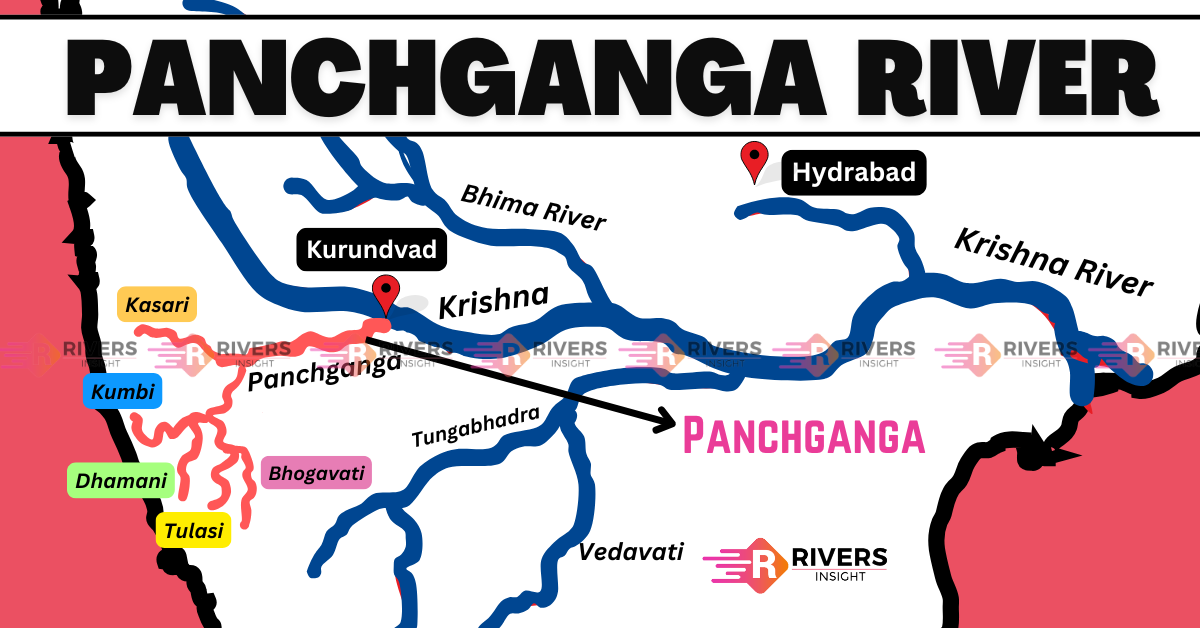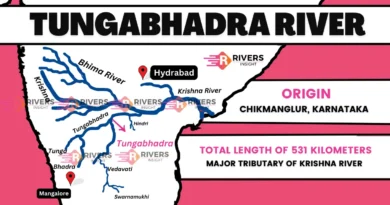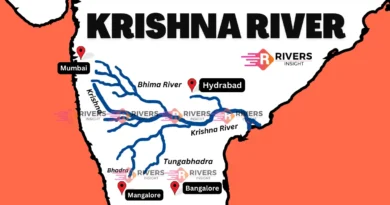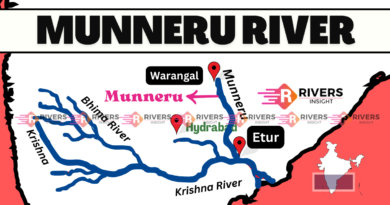Panchganga River: Map and Temples of Kolhapur
The Panchganga River is a major tributary of the Krishna River, flowing through Maharashtra, India. It originates in the Sahyadri mountain ranges and is formed by the confluence of five rivers—Kasari, Kumbhi, Tulsi, Bhogawati, and Saraswati—at Prayag Sangam near Kolhapur. From there, the river flows approximately 80 km before eventually joining the Krishna River in Maharashtra.
Table of Contents
Origin and Course of the Panchganga River
The Panchganga River originates at Prayag Sangam, located in Chikhlee Taluka, a small village in the Kolhapur district. It gets its name from the five rivers that merge to form it:
- Kasari River
- Kumbhi River
- Tulsi River
- Bhogawati River
- Saraswati River
After originating at Prayag Sangam, the river flows 30 miles eastward, developing a fertile alluvial plain in northern Kolhapur. The Panchganga eventually merges with the Krishna River at Kurundvad, Maharashtra.
Dams on the Panchganga River
- Radhanagari Dam
- Kalammawadi Dam
- Kode Budruk Dam
- Tulashi Dam
Religious Significance of the Panchganga River
The confluence of the five rivers at Prayag Sangam is considered highly sacred, akin to the Triveni Sangam at Allahabad. Devotees from various parts of India visit this site, particularly during winter and religious festivals, to perform holy dips and rituals.
Temples and Holy Sites Along the Panchganga
- Panchganga Ghat (Kolhapur): Pilgrims take a holy dip here, believing it washes away sins.
- Panchganga Mandir (Panchganga Temple), Kolhapur – This ancient temple, situated near the river, is a revered site dedicated to sacred rituals and religious ceremonies. It holds deep significance in the local culture.
- Mahalaxmi Temple (Kolhapur): Situated near the river, it is one of the most revered temples in Maharashtra.
- Narsobawadi (Sangli): The confluence of Panchganga and Krishna Rivers, associated with Lord Dattatreya and known for its spiritual energy.
Pollution and Conservation Efforts
Over the past decade, the Panchganga River has been severely polluted due to:
- Untreated sewage from Kolhapur city.
- Industrial waste from nearby factories.
- Lack of proper drainage systems, leading to direct dumping of waste into the river.
- Excessive use of river water for irrigation affects water flow.
Efforts to Control Pollution
- The Maharashtra Pollution Control Board (MPCB) has taken several measures to reduce contamination.
- The Government of Maharashtra has launched various projects to clean the river and improve wastewater treatment.
- Awareness campaigns are being conducted to educate locals on the importance of river conservation.




